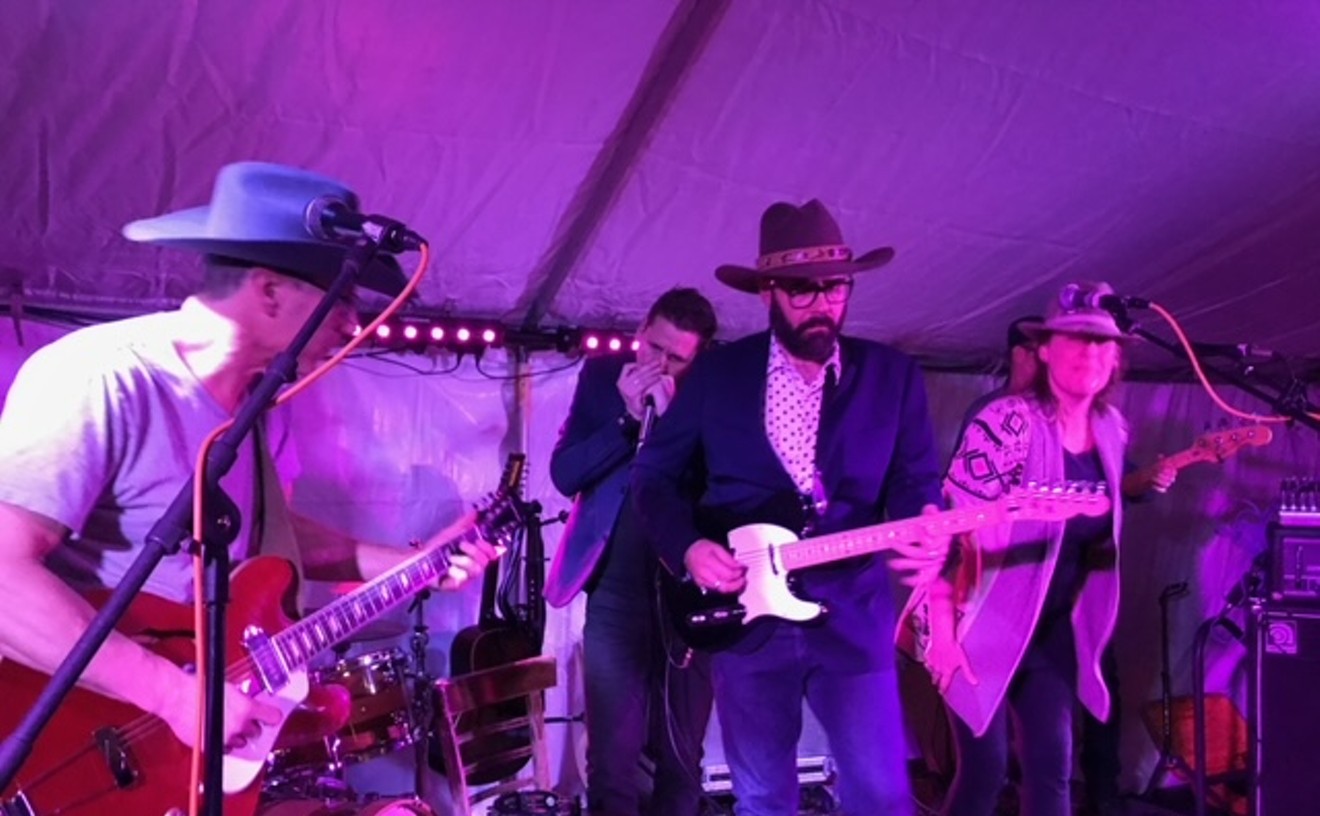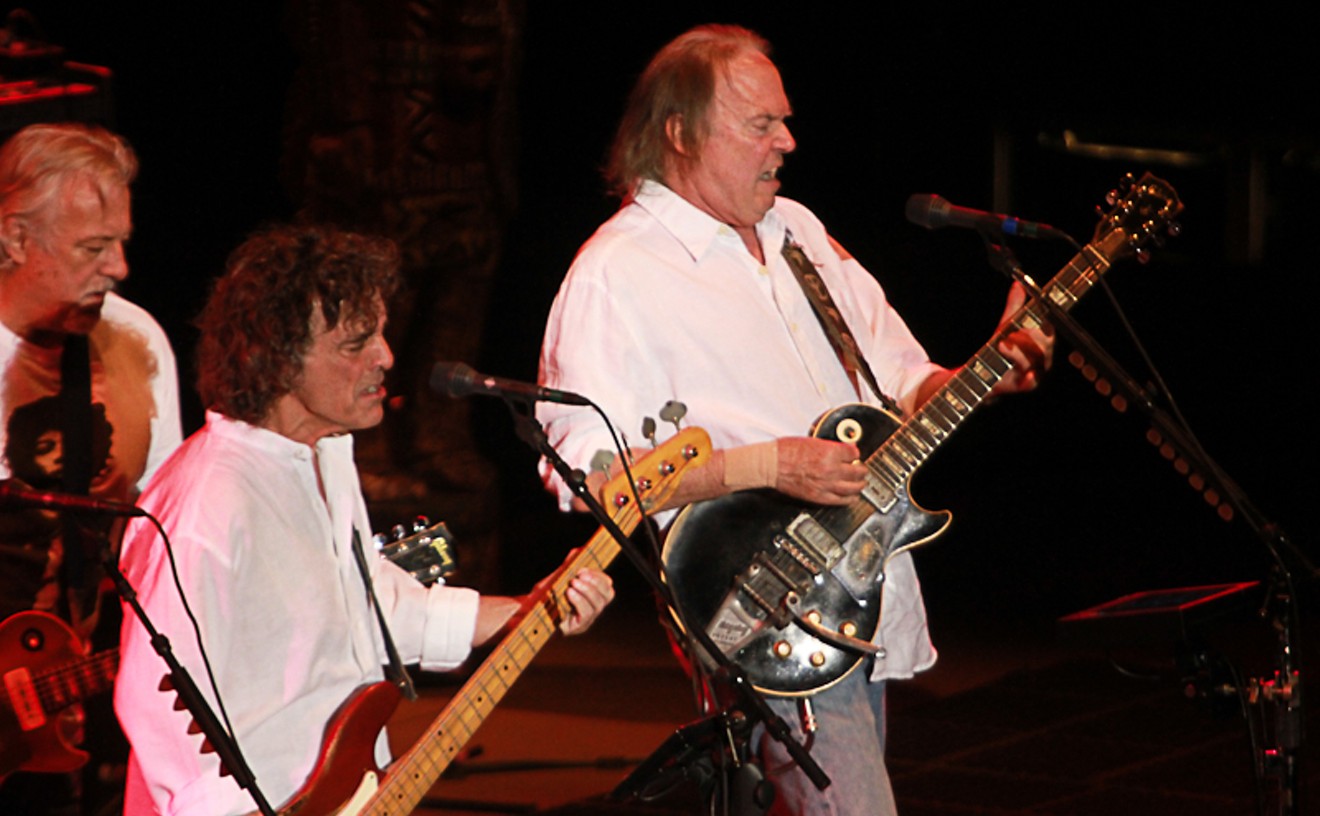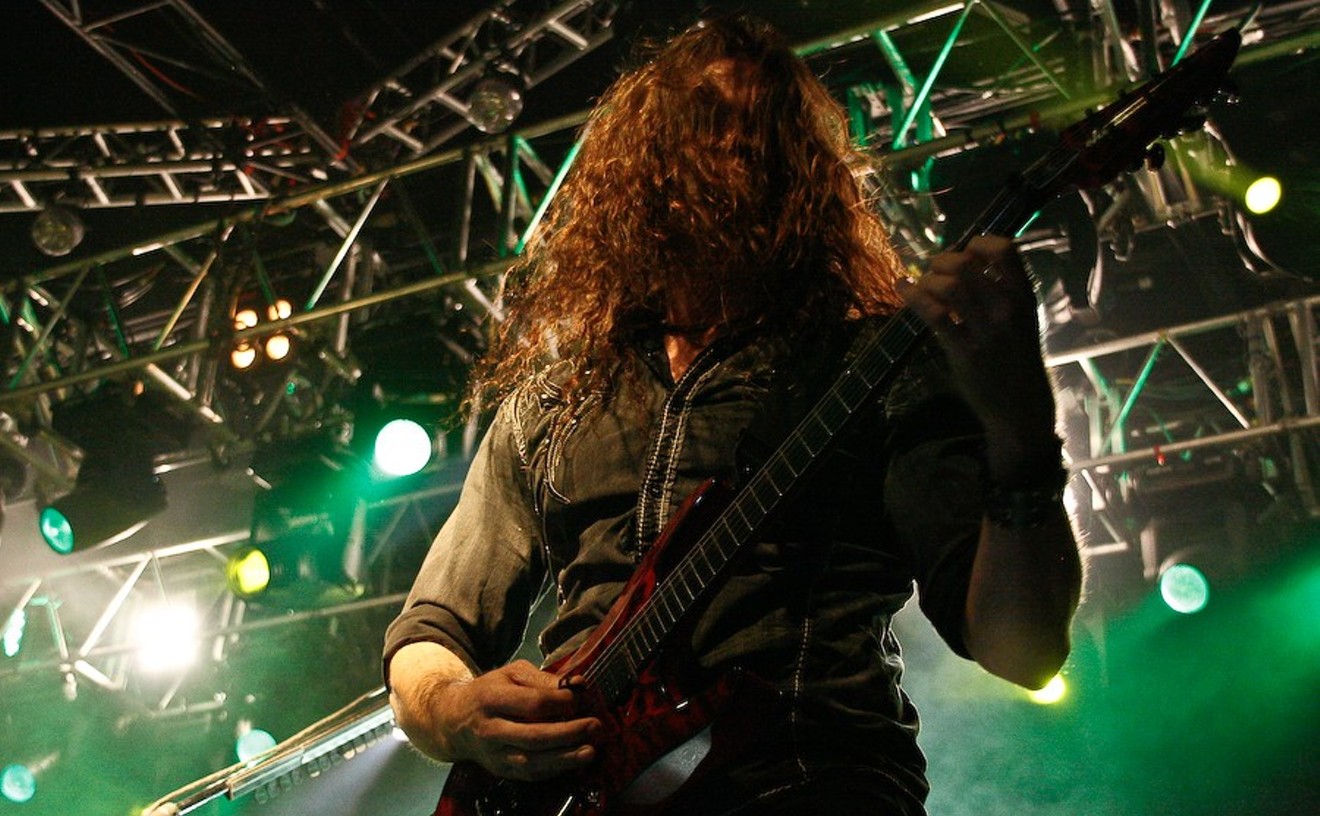Stationed in Athens, Georgia, the members of the Olivia Tremor Control (multi-instrumentalists Will Cullen Hart, Bill Doss, Eric Harris, Peter Erchick and John Fernandes) are part of the Denver-based Elephant 6 collective associated locally with the Apples. As such, they share a number of idiosyncrasies with their fellows, including modesty. For instance, a representative of Flydaddy Records, the act's label, declined to identify the individuals in the photo on this page because "it would make them mad. They prefer to be known as just 'the band.'"
The players' shameless love for Sixties pop, evidenced by the warm hooks and multi-part harmonies that are scattered throughout Dusk at Cubist Castle, their debut CD, can be traced to Ruston, Louisiana, where Hart and Doss first met the Apples' Robert Schneider and Jeff Mangum of Neutral Milk Hotel ("Got Milk?," September 19). According to Hart, "I guess with us all growing up like that, we were all into the same things--and one of them would be harmonies, because we all liked the Beach Boys and the Beatles a lot. You learn from those folks what you like best."
The first efforts by the pimply adolescents to capture these characteristics on their four-track proved less than successful. "It did not come naturally," Hart admits. "Even when we first started out, we always liked to double up the vocals on the recordings. The lead singer would sing it twice because it sounded thicker. And then we started doing that live." This technique reached its logical extension with the group Synthetic Flying Machine, in which Doss, Hart and Mangum sang lead simultaneously. "That got to be kind of dense after a while," Hart confesses, laughing. "So we started thinking we should start trying to do harmonies live. We could do it on tape, but we were always afraid to pull them out live."
A decade later, the Olivia Tremor Control has mastered this skill and moved on to greater challenges, like translating to the stage the morass of layered instrumentation and sound collages that seep from every crack of Cubist Castle. Of course, some tracks defy in-concert rendering. An example is one of a handful of songs that share the moniker "Green Typewriters"; it includes amplified drips, a synthesizer warble reminiscent of Gary Numan's "Cars," and the distorted roar of vehicles driving in the rain. "In one speaker, it's Athens a year and a half ago, and in the other speaker, it's about a year before that in Austin. It's two different times in one happening," remarks Hart, still stimulated by the notion.
By the same token, the musicians don't use the restrictions of a live setting as an excuse to oversimplify their sound. Instead, they play musical chairs in order to produce a reasonable facsimile of their studio material. "We all switch out to different stuff besides guitars, bass, drums and organ," Hart notes. "We do have natural roles: Eric generally plays drums, Bill and I usually play the guitars, and John plays bass. But if you hear a clarinet, it's John. And if you hear a theremin, that's going to be Eric--but then when he's playing that, I've got to play the drums. It's like, 'Oh, this song doesn't need two guitars on it. I'll play a shaker, because it seems more appropriate in this song to have a really good tambourine line along with the drumming.' We'll see what the arrangement calls for." He concedes, "It doesn't end up sounding like what's on the record, but we're giving it our best shot without having 52 people on stage."
The resulting blend of elements has a corollary in painting, one of Hart's passions (he begat the doodly, melting artwork that accompanies the CD). "I feel like the painting sometimes can overshadow the music for me," he allows. "Like, I don't write songs because I'll be painting for months, and I always think that it's not going to come back. But then I start thinking about painting in relation to sound and music, and it gets me inspired to do music again. I'll be mixing up some yellow and I'll think, man, that's just like putting this sound over the top of this one. I've been interested in abstracting sound--recording sounds from the environment and messing around with it. That feels more like a sound painting to me."
Another of the visual arts in which Hart has an interest is cinema; in fact, the preamble to Cubist Castle reads "Music from the unrealized film script." Hart confirms that the Controllers see the songs on the disc as the basis for a movie that has not yet been made--"and maybe it won't be." However, he adds, "We sit around and talk about ideas all the time. The reason we hadn't thought about previously doing it is because we made it up as a soundtrack to something that seemed like it was real, if that makes sense. There were all these ideas about dreams and dreaming, which is dusk, and we had all these images. But we thought, if we did get somebody to film these, would that spoil everybody's images?" Nonetheless, he says, "We have found someone now who has walked back into our lives from the past and who is an amazing filmmaker. I went to junior high school with him, and high school as well, and I hadn't seen him since. I recently watched a few of his films, and they basically blew me away. We've been talking with him about doing some stuff, so we might get around to doing it."
If this undertaking comes to fruition, don't expect a conventional narrative. Among the scenes slated for celluloid is this recurrent reverie of Hart's: "I keep having this image of a crown, and it's sitting on this stump of a tree that's been chopped down," he reveals. "And you get to see it change over the centuries, over an ice age--and it's still sitting there. Then it's a field of flowers over centuries, and finally, it's an ocean, and the crown keeps being covered in muddy surf. Then you see airplanes and technology all around it, but it's been there the whole time."
Visions like this one form the basis for a new EP, but Hart points out that they did not begin with either him or his cohorts. Rather, the band solicited fans via a note in the Cubist Castle booklet and a notice on its Web page to send "cassette-taped details describing your favorite, most interesting dreams (real or otherwise)" to "the Black Swan Network." Two dozen willing donors responded, and the group used their most intriguing concepts as artistic fodder. Hart describes the forthcoming release, dubbed The Olivia Tremor Control/The Black Swan Network/The Olivia Tremor Control/The Black Swan Network..., as "an instrumental record where all the words are supplied by the dreamers and collaged over music. It's not ambient, though. Some of it is more traditional-type songs, but it's underscored with collages of people talking...What we would do was take lines that we liked out of a ten-minute rant. We might take four images: 'I was walking down a beach.' Push stop. On and on."
Equally bizarre is the Olivia Tremor Control project Explanation 2: Instrumental Themes and Dream Sequences. While assembling Cubist Castle, Hart and company learned that some of their extra instrumental tracks were vaguely compatible with selected pop songs when they were played concurrently. The discovery led to the making of Explanation, which generates a seamless quadrophonic experience when it's spun at the same time as Cubist Castle. As Hart puts it, "If you play them on different systems and separate the speakers of each stereo, it should appear, if you sit in the middle of it, that you are sitting in the middle of something circling around you."
At this point, it's unclear what the bandmates have in store for listeners of their second long-player, which is in the midst of being recorded; Hart will say only that the Apples' Schneider may be handling the engineering chores on some of the cuts. Such collaborations are typical of Elephant 6 signees. For one series of dates, Doss, Harris and Erchick performed with both the Olivia Tremor Control and Chocolate U.S.A., an Elephant 6 outfit led by Julian Koster that was also on the bill. "It was the exact same lineup," Hart recalls. "It was like, 'Hey, didn't that band just play?'" But the potential for confusion will not prevent future coalitions: "If Julian plays a great accordion, we're going to ask him to play accordion--and if he needs a theremin, we've got one. It really is like a co-op, but it's becoming more and more busy. It's harder to pin someone down, because they're playing in six bands."
Greater exposure is also a factor. Elephant 6 acts continue to receive acclaim from critics and arena-filling artists like Beck, who invited the Olivia Tremor Control to appear on the bill with him during part of his endless 1997 tour. Hart reports, "They pretty much called different bands to do two-week legs, and we were one of the bands contacted, because somebody liked what we were doing. We didn't have any idea what to expect, but most of the crowds were pretty responsive to what we were doing." He pauses. "Well, up to a point."
It's no surprise that a certain percentage of the audience was puzzled by the Olivia Tremor Control--or that people with radio-friendly tastes assume that the band's fuzzy, hummable tunes and frequent episodes of psychedelic pandemonium aren't solely fueled by creativity. "If you're doing something a little different, people assume that you're high," he laments. "I've heard so many people say that before. You're listening to Captain Beefheart or something, and they're just like, 'Man, I bet he was on so much acid!' And you're like, 'Actually, I don't think he even did acid at all. He's just insane, and it's great. Thank you.'"
The Olivia Tremor Control, with the Apples and the Minders. 8 p.m. Saturday, October 11, Bluebird Theater, 3317 East Colfax, $6, 322-2308.










